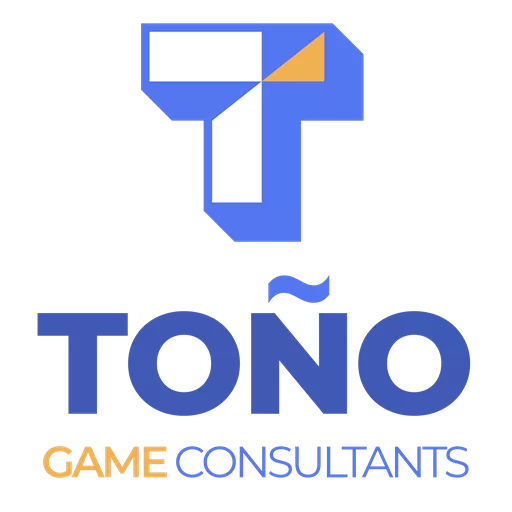If you’ve been around game development circles, you’ve probably heard the term vertical slice thrown around like the latest power-up. Some swear by it, others confuse it with a demo, but almost everyone agrees it’s a turning point in development.
So what is a vertical slice, and why does it matter so much?
In this guide, we’ll unpack what makes vertical slices different from prototypes and demos, why they’re considered a secret weapon for game developers, and how building one can align your team, impress investors, and keep your project on track.
What’s a Vertical Slice, and Why Should You Care?
Picture this: you’re working on your dream game. Concept art is flying, mechanics are half-built, and the story’s still on sticky notes. How do you prove, to your team, investors, or even yourself, that your idea can come together as a real game, not just a prototype?
That’s where the vertical slice comes in.
To avoid costly mistakes, it’s important to distinguish between a vertical slice in game development and a standard game demo. The table below breaks down the key differences.
| Aspect | Vertical Slice | Demo |
| Purpose | A fully polished slice to prove vision and secure buy-in from teams, investors, or publishers. | A teaser built to excite players and generate hype. |
| Audience | Internal stakeholders, dev team, and decision-makers. | External: players, fans, and press. |
| Quality & Polish | Near-final assets across all disciplines (art, sound, UI, gameplay). | Work-in-progress, often with placeholders. |
| Content Scope | A tiny but complete section of the game showcasing all core features. | Broader, often a level or mission, but less polished. |
| Use In Development | Becomes the blueprint for full production. | Serves as marketing material or feedback loop. |
And, the last question in the intro: “Why should you actually care about a vertical slice?”
Because the vertical slice is the first moment after game prototyping and engine proof when all game disciplines converge and you ship one tiny piece at near-final quality. It’s where programming and design integrate for real, and where project managers keep the work aligned and unblocked.
-
Developers get a concrete “definition of done” to aim for.
-
Stakeholders see the actual look, feel, and pace, no hand-waving.
-
Playtesters experience the fun factor, end-to-end, in a contained slice.
Now that you know what it is, here’s why it’s often the difference between momentum and stall-out.
Why a Vertical Slice Can Make or Break Your Game
-
It reveals truth fast. A polished micro-level exposes reality: that combat that “felt great on paper” may feel muddy in play; that art style that shined in stills may clash in motion. Better to learn now than 80% into production.
-
It rallies the team. Instead of parallel guesses, the slice gives artists, designers, programmers, and producers, a shared target. From here, you can run scrum to iterate predictably on code/design while keeping QA on a stabilization lane. And to keep that balance between vision and execution, it helps to understand how Scrum Master vs Product Owner roles translate into game dev, one protecting the process, the other driving priorities.
-
It de-risks funding. Investors fund evidence. A tight slice says, “This is the game, just multiplied.” It proves feasibility and reduces hand-wavy pitch risk.
-
It saves time and money. You iterate on a small, fully integrated chunk before scaling. That cuts rework, limits scope creep, and gives you a reliable blueprint for content and systems.
Before you lock the slice scope, map it. Use Story Mapping in Game Dev: Your Ultimate Cheat Sheet for Your Next Game to turn features into a testable, end-to-end slice that integrates code, art, and UX from day one.
What Are the Steps to Crafting the Perfect Vertical Slice?
So, you’re ready to build a killer vertical slice? Great, this is where your concept becomes reality. But before you dive in, treat it like a mini-project with its own plan. A sloppy slice won’t impress investors or rally your team. A polished one will.
Here’s a streamlined roadmap you can follow:
| Step | What to Do | Key Tip |
| 1. Define your core gameplay | Lock in one or two mechanics that make your game unique (combat, puzzles, exploration). | Focus beats clutter. Polish the fun, don’t spread thin. |
| 2. Scope it down | Pick a small, manageable level, mission, or scene that reflects the whole game. | Less is more, avoid scope creep. Aim for 5–10 minutes of play. |
| 3. Polish key elements | Art, sound, animation, and gameplay should be near-final quality. | No placeholders, investors need to see the “real deal.” |
| 4. Add minimal narrative | Give context with a short cutscene, intro, or dialogue. | Keep it light, set the stage without dragging the slice. |
| 5. Playtest thoroughly | Assemble, test, and smooth out bugs or performance hiccups. | Use fresh eyes, outsiders catch issues faster. |
| 6. Gather real feedback | Collect notes from teammates, testers, or stakeholders. | Treat critique as gold, it’s the whole point of the slice. |
| 7. Refine & repeat | Adjust based on feedback, iterate until it shines. | The slice evolves, use it to sharpen your full game vision. |
By following these steps, you’ll have a vertical slice that not only looks great but feels like a true representation of your final game. Just remember, this slice is a sneak peek of what’s to come, so make it shine!
And now that you know how to build one, let’s talk about taking it to the next level and making sure your slice truly packs a punch.
What Are Ways to Maximize the Power of Your Vertical Slice?
Building a vertical slice isn’t just about ticking boxes, it’s about making every detail shine. Here are some practical game dev tips to take your slice from “good” to “wow”:
-
Polish the Core Mechanic
Show restraint: focus on the one mechanic that defines your game. Playtest it, refine timing, and layer in responsive feedback until it feels rock-solid. -
Make the First 10 Seconds Count
First impressions decide whether players lean in or tune out. Start with a bold visual, set the tone with sound, and give players control quickly. -
Tight Scope, High Variety
Even in 5–10 minutes, avoid monotony. Switch environments, vary pacing, or add one twist to keep the slice engaging, without drifting into scope creep. -
Use Micro-Narratives
A full storyline isn’t needed. Instead, hint at your world through a cutscene, dialogue, or environmental storytelling. Give players a taste, not a novel. -
Optimize Performance
No slice survives if it crashes. Profile for bottlenecks, trim assets, and test on low-end hardware early. If it runs there, you’re safe. -
Layer Feedback into Every Interaction
Sound, animation, and VFX should reinforce every action. From landing a hit to opening a menu, the player should always feel their input matters. -
Add Finishing Touches
Small details—smooth transitions, subtle particles, dynamic lighting, transform a rough build into a polished showcase.
How Story Mapping and Estimation Feed into the Vertical Slice
A strong vertical slice needs to be both realistic and measurable. That’s where story mapping ensures every feature reflects the player’s journey instead of just a list of dev tasks, while time estimation keeps the scope achievable within weeks, not months.
When story mapping, prioritization, and estimation work together, the vertical slice becomes your first true milestone in production.
What’s Next After You Nail the Vertical Slice?
Congrats, you’ve built your vertical slice! But remember: it’s not the end of the road, it’s the launchpad. Here’s what comes next:
-
Build your pitch: Combine your slice with scope, timeline, and budget to secure interest.
-
Secure funding or buy-in: Use the slice to prove your vision to investors, publishers, or internal stakeholders.
-
Plan your team growth: Identify the additional roles you’ll need, art, design, engineering, to move from slice to full production.
-
Get early feedback: Share the slice with testers to validate fun, flow, and accessibility before scaling up.
-
Refine your roadmap: Use the lessons from the slice to set milestones, adjust scope, and prevent bottlenecks.
A vertical slice is more than a showcase, it’s a decision-making tool. It gives clarity to your team, confidence to your investors, and proof that your concept works before committing to full-scale development.
Wrapping Up
A well-executed vertical slice isn’t just a milestone, it’s a proof point. It shows that your game’s vision, mechanics, and production pipeline can hold up under real conditions. From here, your next challenge isn’t “can this work?” but “how do we deliver the whole thing on time and without burning out the team?”
That’s where strong production practices come in. Matching frameworks, breaking down scope, and keeping milestones realistic all determine whether your slice evolves into a shipped game, or stalls out.
Ready to take your project beyond the slice? Explore our Game Production Consulting services to build the roadmap, structure, and workflows your team needs to finish strong.
Frequently Asked Questions about Vertical Slices
What is a vertical slice in game development?
A vertical slice is a small, polished, fully playable section of a game that shows what the final experience will look and feel like. Unlike prototypes or demos, it includes near-final gameplay, art, sound, and systems all working together.
How is a vertical slice different from a demo?
A demo is usually built for players and marketing, it can be rough around the edges. A vertical slice, on the other hand, is designed for teams, stakeholders, or investors. It’s polished, complete, and demonstrates the full scope of disciplines in miniature.
Why do developers need a vertical slice?
Because it reveals whether your vision holds up in practice. A vertical slice helps identify weak mechanics, align your team, and convince investors or publishers with a tangible, high-quality example of your game’s potential.
When should I create a vertical slice?
After prototyping and engine proof, but before committing to full production. At this stage, your core gameplay should already feel fun, and the slice will validate whether the rest of the game is worth building.
How long should a vertical slice be?
Typically 5 minutes of polished gameplay. Enough to showcase mechanics, visuals, and narrative tone without building an entire level or world.
What are common mistakes when building a vertical slice?
The biggest pitfalls are scope creep, leaving placeholders, and failing to polish. A vertical slice must feel like the finished game in miniature, cut scope if needed, but don’t cut quality.
Can small indie teams build a vertical slice?
Yes. Even with limited resources, a focused and polished slice can help indies secure funding, recruit collaborators, or validate their project before scaling up. The key is keeping the scope tight.
How does a vertical slice fit into Scrum or agile workflows?
Scrum teams often use the vertical slice as a milestone, aligning designers, programmers, and artists around a common goal. It’s a way to integrate all disciplines into a working, shippable feature set early.


